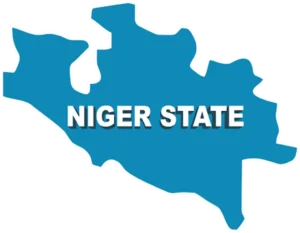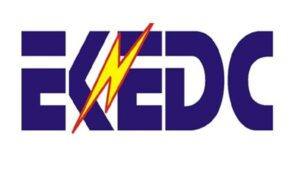Negative GDP: Embarking on broad engagement to streamline patterns of short & long term growth plans
Analytical assessment of questions over the defining profile of the Nigerian economy with recession in view have been controversial. Although, figures contained in a National Bureau of Statistics (NBS) February report disclosed that the Country’s economy moved out of recession, it is in the view of critical observers that these are merely nominal when consideration is given to the reality of the productivity of the economy in the light of increasing inflation among other strains of growth challenges.
The report had in February revealed that the Gross Domestic Product (GDP) grew by a marginal 0.11 per cent in the fourth quarter (Q4) of 2020. The figures contained in the GDP growth report released by the NBS had revealed the Country’s economy recorded -1.92 per cent growth. Nigeria’s economy had according to report, slumped into recession, the second time in five years, in Q3 of 2020 with 3.62 per cent negative growth. This was a consecutive quarterly negative growth which trailed the -6.1 recorded in the second quarter, 2020.
However, despite the February report of the Country’s economy coming out of recession by Q4 2020, report by the NBS on Tuesday disclosed that the economy recorded an overall annual negative growth rate of -30 percent in real terms. According to the statistics, on a year-on-year (YoY) basis, the net trade balance recorded -52 per cent growth rate in real terms in Q3 and -73 per cent growth rate in Q4; which resulted in an annual growth rate of -30 percent in real terms. Thus, the NBS report disclosed that the economy recorded an overall GDP growth rate of -1.9 percent YoY which was a huge backlash from the positive 2.3 percent recorded in 2019.
Exports and Imports of goods and services according to the figures, fell by 27 per cent and 23 per cent respectively during the period with a negative balance of trade of -30%. In its Nigerian GDP Report (Expenditure and Income Approach for first, second, third, and fourth quarters of last year, Q1, Q2, Q3, and Q4, 2020), the NBS had stated: “In Q3’20, Nigeria’s real GDP at basic prices grew by -3.62 percent on a year on year basis, marking a second consecutive quarter of negative real GDP growth after -6.10 percent recorded in Q2’20. In Q4’20 however, growth turned positive, recording 0.11 percent in Q4 YoY. Nevertheless, the negative quarterly growth rates recorded in Q2 and Q3 2020 resulted in annual growth rate of -1.92 percent for 2020, compared to 2.27 percent recorded in 2019. In Q4’20, real exports grew by -42 percent and -58 percent, year on year, resulting in an annual growth rate of -27 percent, or 42 percent points lower than 15 percent recorded in 2019. Quarter on quarter, QoQ, however, growth in real exports remained negative from Q1’20 to Q4’20. Imports of goods and services also declined in real terms, recording -23 percent in Q3 and -40 percent in Q4. On an annual basis, however, the real growth of imports was worse than 2019, at -23 percent in 2020 compared to 27 percent in the previous year. On a QoQ basis, imports grew by 16 percent in Q3 but declined -4 percent in Q4’20. Due to declining rates of growth in exports and imports in 2020, the growth in net balance of trade (or net exports) was negative in Q3 and Q4 2020. On a YoY basis, the net trade balance recorded -52 per cent growth rate in real terms in Q3 and -73 per cent growth rate in Q4. This resulted in an annual growth rate of -30 percent in real terms.”
While recourse may easily be made to the COVID-19 pandemic as the underlying cause for the negative reports, it is frankly apparent that the Nigerian economy has been exhibiting strains of being enmeshed in wobbling entanglements prior to the unexpected visitor. The COVID-19 pandemic may only thus, be alluded to as one among several instigators informing the negativity in the performance of the economy. It is apparent that the status of non-oil sectoral performance is largely incommensurable to the demands of growth. While some non-oil sectors have continued to record inconsequential growth which are incommensurate to present demands, there are others headed for the precipice.
The necessity to give in-depth perusal into the prevailing state of the Country’s economy is paramount. In this regard, embarking on critical assessment of the gaps recorded from the strains created by the shortfalls of accruals from the oil sector is essential. This is imperative for critical analysis to weigh the depth of gaps needed to be filled by proceeds from non-oil sector, and thereby channel all efforts required towards achieving the desired result. While this is paramount for the short term, such efforts should not however be hostile in dovetailing towards long term growth necessities. It is therefore, essential for the Government to work and walk strategically with robust engagement with Private Stakeholders both in the oil and non-oil sectors in a bid to collate economic intelligence for policy crafting, established on profound grounds of statistics and solid submissions to arrive at a vantage point of policy directions in coordinated patterns necessary to address the prevailing woes of the economy.
In this light, it is hence important for broad engagement to be put forward in view of sorting needs according to priorities, such that short term necessities can be streamlined in patterns of directions that will not portend strains against long term growth demands. In as much as both short term and long term growth plans are necessities that cannot be sacrificed for another in addressing the present schematic character of the economy, it is significant that the impetus towards these paths be harmonised with concerted efforts and strategic brainstorming.




